“Is all the stuff that rolls off with a peeling gel really my skin?“
This is a question I come across a lot! In case you’ve forgotten, a peeling gel is a popular type of cleanser in Asia. You start off with a watery gel like this, which you spread over your face (the one picture here is Laneige Strawberry Yoghurt Peeling Gel):
Then you massage the gel into your face and you get this:
First of all, as you can see, there is a LOT of stuff here, and it’s light pink, which is not my skin colour! But this is a beauty science blog after all, so let’s do some experimenting…
Here are two peeling gels I ordered off eBay when my skin was freaking out here in Europe: The Face Shop White Jewel Peeling Geland Tony Moly Floria Peeling Gel
(when I haul skincare, I haul in multiples).
To check if the fibres were skin, product, or a mixture of both, I wore a nitrile surgical glove on my left hand, and the finger of another glove on my right hand (so I could make sure I had a dry button-pressing finger for photos). I started with a blob of Tony Moly Floria Active Peeling Gel, about the amount I would use for my entire face:
I then massaged it with my gloved finger for a good thirty seconds to get this:
A few fibres! So the product is definitely causing some of the balling. But on the skin it takes about 5 seconds before you get lots of balled up fibres. On the other hand, 30 seconds without skin contact gave me only a tiny amount. I tried waiting and blowing off some of the water, in case the extra water was preventing the product from bunching up properly, but to no avail (some of the water will normally be absorbed by the skin). This confused me for a minute – until I remembered that the gel has a massively high water content. What is there in skin that might not play well with water and cause weird textures? Oil!
I prepared a fresh glove and blob of Floria gel, and added a couple of drops of Jurlique Skin Balancing Face Oil (I’m sure ordinary cooking oil would have done fine, but I had this close by).
Rub rub rub… hey presto! Clumps!
I checked with The Face Shop White Jewel Peeling Gel as well. The original dispensed product:
After rubbing with a gloved finger – a tiny bit of clumping:
Added a drop of oil:
Rubbed again – lots of clumping!
Here’s a similar sized amount rubbed on the back of my hand:
As you can see from the amount produced, most of the stuff coming off is product, and some skin oils are combining with it to form the clumps. But notice how the product on the glove is entirely white, but there’s some grey discolouration in the fibres on my hand? That’s dirty skin, and if you’ve ever used a peeling gel on a flaky bit of your face, you’ll know that it’s incredibly efficient at removing dead skin (though not efficient enough to rub off as much skin as you’d think from seeing it bunch up).
So what’s happening? Peeling gels frequently claim to “peel” dead skin with fruit enzymes, but there’s no way they can act within 10 seconds without burning your face off. This means peeling gels are actually a very gentle physical scrub – the scrubbing bits are the soft, bunched up fibres, which are usually made of bunched up acrylates/C10-30 alkyl acrylate crosspolymer* (sometimes listed as “carbomer” in the ingredients list). Some gels also contain a lot of cellulose, which adds to the bunching effect (this is usually in the opaque ones, like Laneige Strawberry Yoghurt Peeling Gel and The Face Shop White Jewel Peeling Gel).
(Check out the video for this post – it has a bit of extra microscoping as well!)
According to Colin’s Beauty Pages, the biodegradable, water-soluble acrylate polymer is usually used to thicken a product, but if there’s too much used the polymer will ball up on the skin, which is usually considered a problem. In this case, it’s being used as the main feature of the product! If you’re looking for a more environmentally friendly alternative to microbead scrubs, these might be up your alley.
Conclusion: Peeling gels aren’t chemical exfoliants – they’re gentle physical exfoliants (scrubs). The fibres form from ingredients that are in the gel to begin with, balling up from the rubbing motion with some help from oils on your skin. There will be a small amount of dead skin in there too.
* I’ve only ever used peeling gels with this as the bunching ingredient – it’s quite possible that there are peeling gels that use another ingredient.
This post also contains affiliate links – if you decide to click through and support Lab Muffin financially, thank you! For more information, see Disclosure Policy.
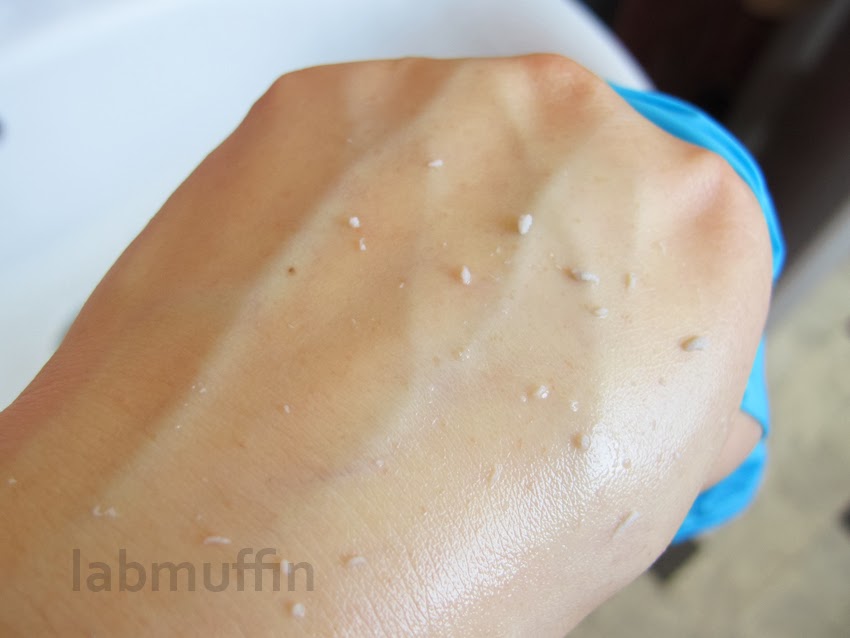






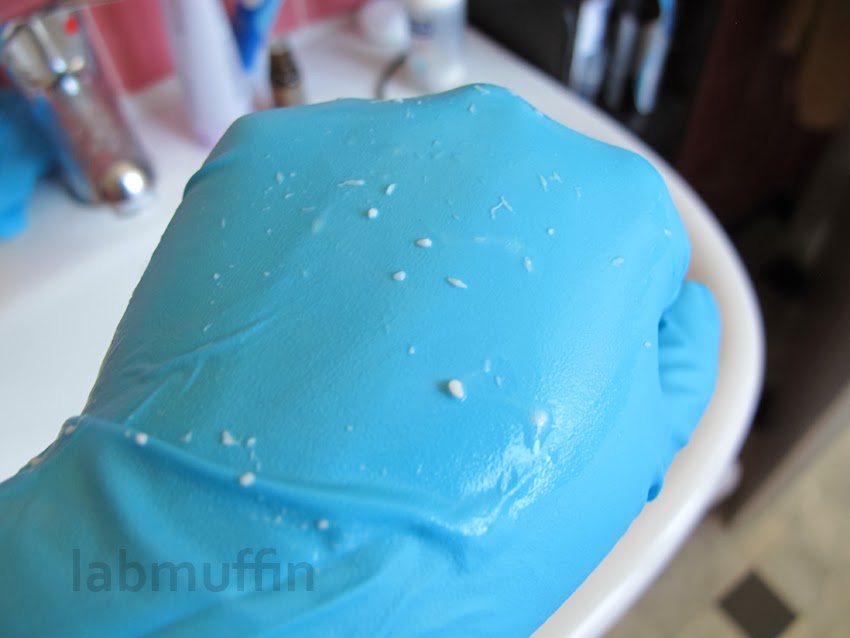
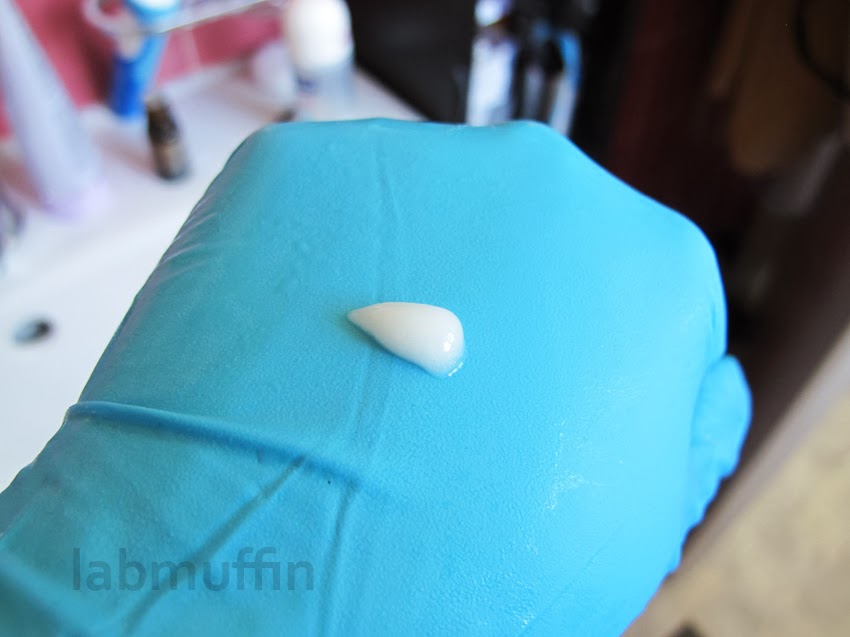




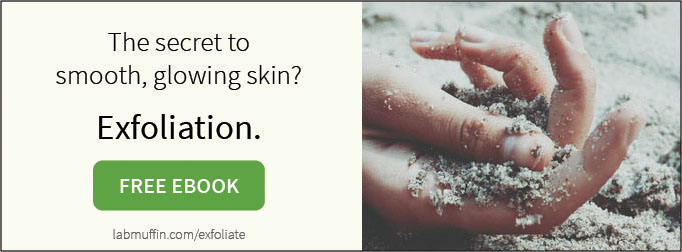



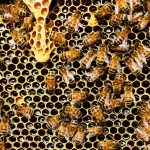
I love that you did this experiment! I’ve always suspected it might be a little bit of both (skin and product), but it never occurred to me that it was oils in my skin that “activate” it. Thank you for doing this!
I was so worried when the peeling gel didn’t clump up with just rubbing! Another possibility I considered before trying the oil was that the gel needed a speck of solid to form around (kind of like the speck of dirt that turns into a pearl) – I put some tiny bits of toilet paper in there to simulate that, but nothing happened. Luckily the oil worked, otherwise I would’ve been rubbing all sorts of junk around for hours…
So, here’s an interesting twist: I just refilled my pH testing strips and tested the peeling gel I have currently (Primera Facial Mild Peeling Broccoli Sprout). The pH was 4, so low enough to work effectively as a chemical exfoliant. I still think you’re right about the little balls actually being comprised of the product itself, and not dead skin, but it does look like these gels could have some chemical exfoliating properties after all!
I love your blog, there is always something for me to learn in every post. You are such a super clever gorgeous girl. Hope your skin has cleared up.
Thank you so much Carli! x
This is great! I was always scared off those products because I was worried they’d sting and burn from too much chemical exfoliant, nice to know that’s not the case. Would you consider doing a post on Retinol? I’m trying to understand the science behind whether it is effective or not and would love to hear your take on it.
Thanks for the suggestion! I’ll look into it 🙂
Interesting to know! Its something that i’ve always been confused about and wasn’t sure whether it was my skin or not so thanks for that!
i love that you turned this into an experiment!!
This is amazing! I love that you did this, as I have often wondered about the excess pilling that comes off when using these gels. I am glad I am not that flaky and gross after all, lol 😉 this was really great to learn, so thank you! 🙂
http://unmaskeddame.blogspot.co.uk/2015/06/do-peeling-gels-really-work-how-to-use.html
I decided to do a response to this, as the argument of the effectiveness of peeling gels should be balanced! 🙂
That initially happened with my glove experiment too until I added some oil! Skin has a tiny amount of oil which is what I think makes the cellulose clump – there should definitely be clumping with the De-toc product because the 3rd ingredient is cellulose, and cellulose is a solid that doesn’t dissolve in water! It’s just floating around suspended in the product and needs something to make it bunch up.
when my sister introduced a peeling gel to me. i said “that stuff that comes off is just the product itself, not your ‘dead skin'”, but then i tried it on my inguinal area one time and it instantly lightened – i did the left side first and compared it to the right side, (which i didn’t apply the gel to) and the difference was very – astoundingly – noticeable. so, yeah, changed my mind bout it – peeling gels actually work!
The bunched-up product is really good as an exfoliant! I think the soft fibres manage to get into spaces more efficiently than grainy scrubs or konjac sponges – it feels a lot more thorough.
I kinda figured peeling gels were trickery.
What about peel-off masks? I hear from some people not to use them because they cause wrinkles by tugging at the skin. Others swear by them.
I don’t think the peel-off factor does anything, other than irritate a bit – though I also don’t think it’s traumatic enough to cause wrinkles!
I use Hell-Pore pell-off mask for my nose and it does a good job at removing my blackheads.
Bravo! I always suspected that
Having used Premier perfecting for two months I am highly sceptical. Firstly I noticed that the jar of cream actually contracts in content, even though I am not using it. Secondly, there appears to be a shelf life. Using it in the last two days it no longer balls up or extracts. I believe this product to be a very carefully concealed scam!
I’m super sceptical of Dead Sea products – I don’t doubt that Dead Sea minerals have beneficial properties but the way those companies operate make me super suspicious!
Ha, I was a TOTAL skeptic when approached by a sales rep for a similar product. Young and dumb and wouldn’t be sold some super expensive product that was probably just a chemical reaction anyway….. So I thought it was awesome to see you try tests to see, is it really doing something or is it just smoke and mirrors through chemistry!
Fast forward like 10 years, a worker at Ulta showed me the same sort of enzyme product by Peter Thomas Roth. At this point, my skin was a mess w/ fungal infections. I mixed 50% AHA lotion and 50% Lotrim (foot antifungal, or jock-itch, something lol!) based on a forum post, and it made sense based on my research. Put that on, went to bed, and aside from being super greasy, all this white *gunk* just slid out of my pores when scraped gently with a soft edge tool. So when the little balls rolled up on my hand at Ulta, I bought the stuff! I know it would be working on the same stuff, just not as deep.
I get these white plugs in the pores around my nose creases and most pores on my chin from the skin infection, and all the top of the nose pores are sealed. I roll this stuff over the white sink and dark wads of stuff roll off. I let it sit for 10-30 minutes and my face is super soft. The white ‘plugs’ or whatever aren’t visible unless I start stretching out the skin, which I shouldn’t do anyway….
I recently looked it up on Paula’s Choice Beautypedia. I guess it’s incorrect to call it an “exfolliant” in the true sense of the word. They say: “This ingredient may be a good keratolytic, which is a fancy way of stating that it exfoliates (“peels”) keratin, the chief protein in skin”
http://www.paulaschoice.com/beautypedia-skin-care-reviews/by-brand/peter-thomas-roth/_/FIRMx-Peeling-Gel
So the ingredients act as a “keratolytic” and yes, they are cleaning gunk off our faces. Surface gunk. Not sure if you can buy something called simply – a keratolytic? Anyway, it got horrible ratings from their experts because the brand calls the product an “exfolliant” when you’re in the ingredient biz, you go by the literal words they use. So it’s really just a gentle peel. Not even a scrub I like it, it works for what I need.
I once got talked into buying Vive per Lei peel by one of those pushy mall guys. After believing promises of a perfect skin, I was left with open sores despite using as directed. I’m pretty positive the balling was a gimmick but there must’ve been a chemical peeling component to cause sores?
Fast forward to this year. I tried Skin Inc and it’s amazing. IDK how it works but it helps get rid of the annoying dry spots which is all I need and I do love me gimmicky products.
So do u suggest that the tony moly peeling gel is good for the skin or not?
I like peeling gels in general, but I’m not a huge fan of the Tony Moly one. I much prefer the one from The Face Shop!
Do enzyme peels actually work? I just bought pumpkin enzyme peel liquid from bulkactives.com, used it at 50% for 10 minutes and my skin still feels rough and flaky. :/ Also tried white willow bark, same story! The only thing that seems to work is rubbing with my hands or a towel on damp skin, I get little clumps then, so maybe these gel peels might work! Hopefully without rubbing so hard, that irritates my skin.
great insight! thank you!
So I love the dead skin product but I have a container that’s dried up is there anything I could mix with it to get it back to normal or just trash it
So what about Peter Thomas Roth peeling gel? Is it worth buying?
I haven’t tried it! I like peeling gels as a mild physical exfoliant.
I’m confused after reading the comments and that response blog post someone mentioned in the comments. Why does everyone seem to think your post states that peeling gels do not work? I thought you demonstrated well that the whole ball coming off is not dead skin, it’s mostly product, but a tiny bit of dead skin does come off, and that much is enough. And so they are effective.
Am I wrong?
Nope, you’re not wrong! But I think a lot of peeling gels market themselves on the fact that all of the peely bits are skin, which is super deceptive.
I remember being really disappointed when I learned that the first time, but I would never had thought that oils were needed to make it ball up.